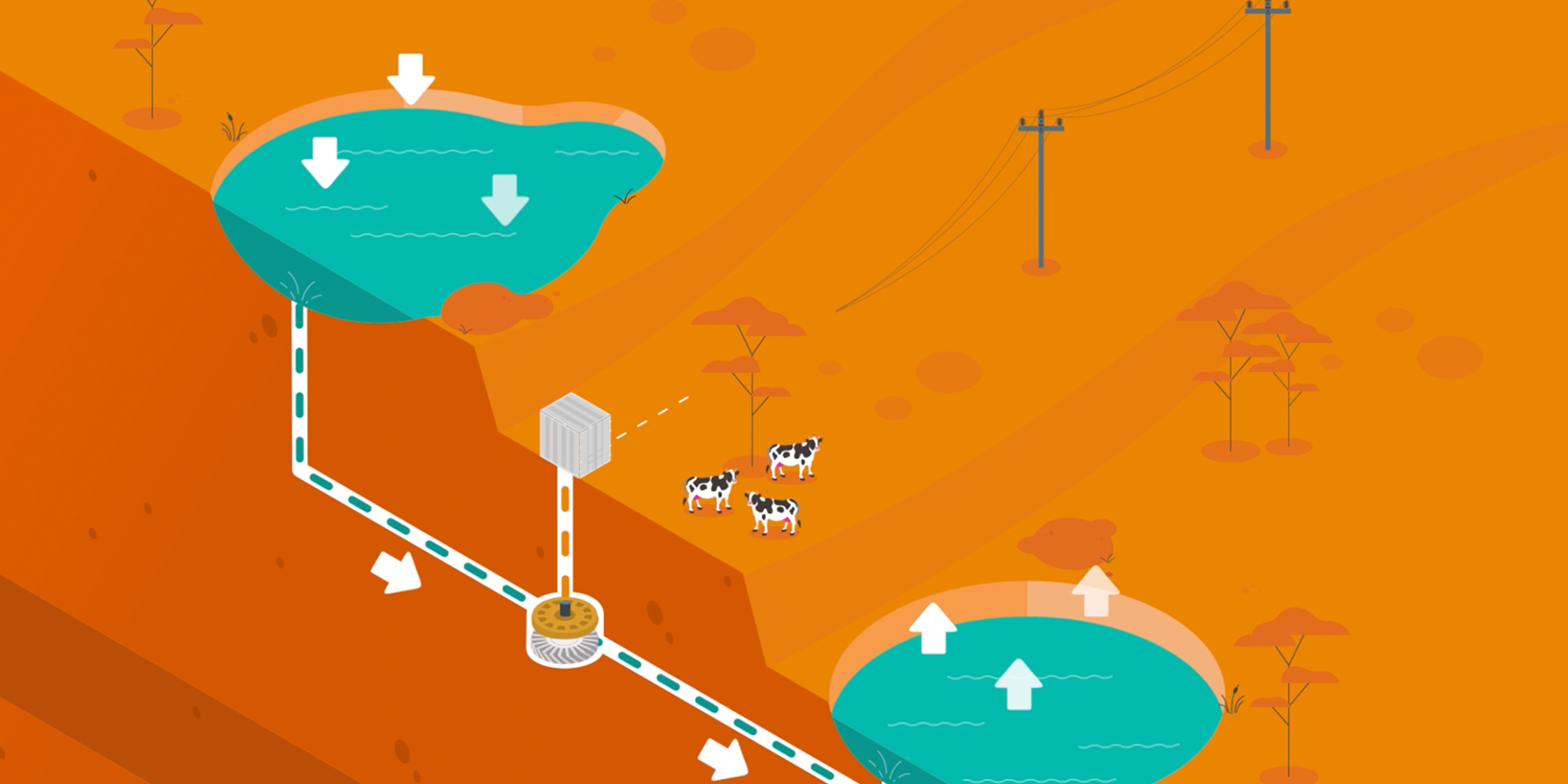Similar to the technology used in the Snowy River system on the East coast, mini-pumped hydro is a form of pumped hydro.
Just like traditional hydro-electric systems, water is pumped from a lower area to a higher area, the ‘storing’ of water in the higher dam acts as a battery
When power is needed, the water is released through a generator to create power for distribution.
However, ‘mini’ means it happens on a much smaller scale.
For example, the new Walpole mini-pumped hydro system has a capacity of 1.5MW, much smaller than a large-scale energy generator. It only requires an incline or drop of around 90 metres, supported by a dam area of around 2 hectares, smaller than many of the dams used for farming in the region.
This makes it the smallest edge-of-grid mini-pumped hydro system in the world, and a fascinating insight into how mini-pumped hydro will work, and the benefits it will bring.
What is mini-pumped hydro?
This mini size makes the technology more environmentally friendly, and able to be used in more locations, as Walpole shows, you can make it work with just two relatively small dams, and without disturbing the surrounding area.
It’s smaller power generation capability also makes it easier to connect the mini-pumped hydro system into the grid without formal augmentation works, which would be required for a larger solar or wind farm.
This makes mini-pumped hydro appealing from a customer, environmental and network perspective, as it’s easier and faster to install, has less impact on the surrounding area, supports renewable and sustainability, and can provide customers with reliable power.
Mini-pumped hydro units, like the one in Walpole become part of a microgrid when they are linked into the network. This means that in Walpole, if there is a disruption to the network, the mini-pumped hydro system can kick-in and provide power for up to two days to just over 500 customers.
Benefits of mini-pumped hydro
- Able to be used in more locations
- Small, so more environmentally friendly
- Easier to connect to grid
- Can use renewable power to pump water
- Can help grid smooth renewable surges
- Has bigger energy storage power (in hours) than batteries
- Can work as a microgrid
- Provides locally generated and more reliable power

